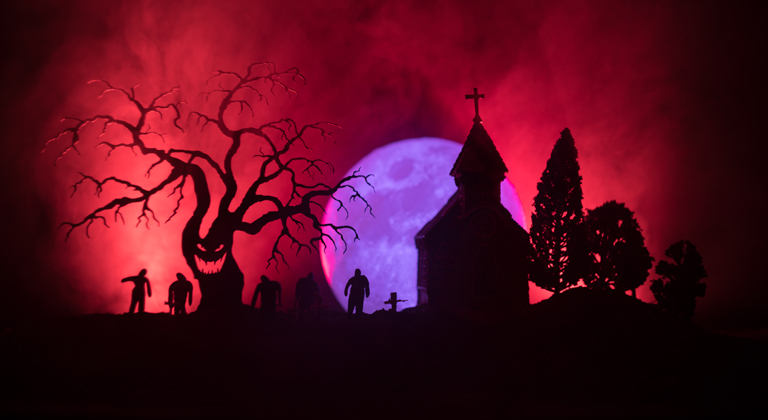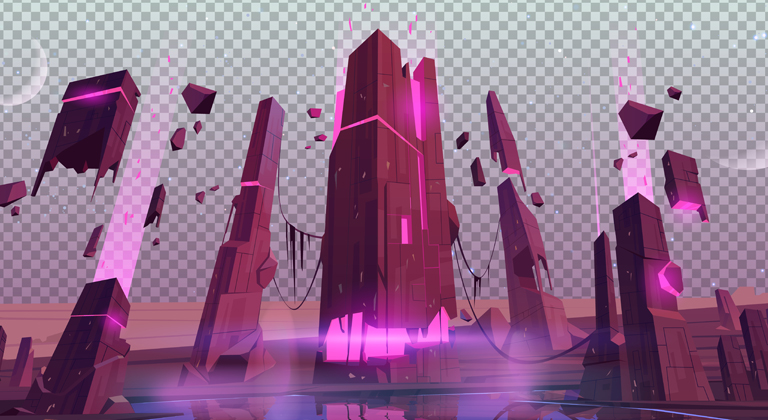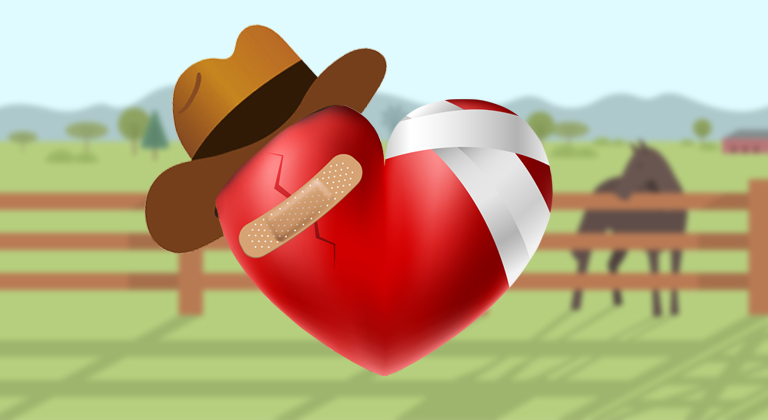10 Essential Tips for Crafting Effective Horror Stories
For authors, Halloween is the perfect time to unleash the darker recesses of their imagination by crafting tales that send shivers down readers’ spines. The art of chilling storytelling has evolved over centuries, with authors like Edgar Allan Poe and Stephen King shaping the genre’s landscape while adhering to its core essence—a masterful mix of fear, suspense, and unease.
Similar to his article last week which dove into Science Fiction world-building, this week Ginger is examining the ingredients that make up truly effective horror stories. By breaking down the core elements that help turn regular tales into spine-tingling literary nightmares, you too can write books that keep your readers up at night, long after they’ve reached the end of your book…
Some Starbucks stores have already unleashed their pumpkin spice products, which means summer is effectively over! For many of us writers, our attention turns next to Halloween – one of the most evocative and fun holidays in America, and the perfect season for writing and sharing bone-chilling tales of horror and suspense.
Tales of terror are as timeless as storytelling itself. In fact, most of us have our introduction to horror stories gathered around a campfire or flashlight, hearing them from our friends – little different to how our ancestors must have weaved similar tales. For centuries, horror stories have captivated readers – the best ones invoking a uniquely visceral blend of fear, suspense, and unease.
From the bone-chilling tales of Edgar Allan Poe to the psychological horrors of Stephen King, the horror genre has constantly evolved over the decades, while still maintaining its core elements – the essential ingredients that continue to terrify and delight readers.
It’s those ingredients that are so important when crafting an effective horror story. A tale of terror requires a delicate balance of key elements that all work in harmony with each other; combining to send shivers down our spines and linger in our memory for nights to come.
In this article, I’m going to attempt to isolate the 10 most crucial components that contribute to the success of a horror story – and I’ll back them up with examples from the most popular horror fiction novels by our favorite spine-chilling authors.
1. Atmospheric Setting
An unsettling, haunting setting is the most essential foundation for any successful horror story. Enveloping readers in an eerie atmosphere sets the stage for the unfolding terror – it makes things feel ‘off’ before any of the terrifying events have even come to pass.
A great example is the infamous mansion in Shirley Jackson’s The Haunting of Hill House. The oppressive architecture and mysterious history of this towering mansion creates an environment in which even the walls themselves seem to cling to grim and scary secrets. Similarly, H.P. Lovecraft’s The Shadow over Innsmouth evokes dread with its setting in a decaying seaside town, emphasizing that the location of a story can be as much a character as the protagonists themselves.
2. Well-Defined Characters
Compelling, relatable characters are the conduits through which readers experience horror. It’s their vulnerability, fears, and humanity that make them relatable, drawing readers deeper into the story. One of the best examples of this comes from Stephen King’s iconic saga It – in which The Losers’ Club, a group of outcast kids, faces both supernatural and real-world horrors that seek to destroy them from within and without. Each member of the club has a distinct personality and a uniquely troubled past, making their struggles to overcome Pennywise the clown all the more intense and believable.
3. Unpredictable Plot Twists
We all fear the unknown, and a truly successful horror story keeps its readers on their toes by introducing unexpected plot twists at totally unpredictable times. Gillian Flynn’s Gone Girl is a great example of this – masterfully combining psychological tension with shocking revelations that constantly challenge the readers’ perceptions of the characters and their motivations. It’s these twists that keep readers engaged and amplify the sense of fear and uncertainty – and contribute to the satisfying, if disquieting, conclusion.
4. Building Suspense
A horror story is nothing without the previous three elements, but it’s the next one that’s perhaps most important – the building of suspense. In fact, one of the hallmarks of truly great horror is suspense. The most skilled authors are masters of gradually building tension in their tales, creating a feeling of impending doom that continues throughout the story. Consider Bram Stoker’s Dracula, in which the infamous vampire’s looming presence is hinted at long before his full reveal. The gradual escalation of suspense keeps readers anxiously turning pages, unsure of what might happen next – and that’s why Dracula remains one of the most beloved and read horror stories of our time, even 100 years after it was first published.
5. The Unknown and Unseen
Great horror movies delay showing their monsters for as long as possible – just think of Alien or Jaws. The same can be said in writing. Sometimes, what isn’t explicitly described can be the most terrifying element of a story. H.P. Lovecraft was a master of this. His cosmic horror often plays on the fear of the unknown, in which the mere suggestion of otherworldly entities and incomprehensible truths sends shivers down a reader’s spine even though they’re never encountered face to face. This writing technique encourages readers to fill in the gaps with their imagination; making the horror feel much more personal and visceral.
6. Psychological Horror
Slasher movies are defined as horror, but its psychological horror that truly delves into the darkest corners of the human mind; and the written word allows authors to explore that in much more depth than you can on screen. Shirley Jackson’s The Lottery is a brilliant example of this, revealing the horrifying consequences of conformity and groupthink in a way that makes the reader wonder if the real horror is just how warped human decency can become. By exploring the psychological aspects of fear, authors can tap into primal anxieties that resonate more deeply with readers than monsters or the supernatural can; and make us question our own understanding of right and wrong.
7. Moral Ambiguity
Of all the elements of horror, this is perhaps my favorite. Adventure stories and fantasy often have characters that are explicitly “good” or “bad.” Not so in horror. In many tales, the heroes and heroines have secrets and selfish motivations of their own, and this moral ambiguity adds a dark and delicious complexity to an effective horror story. In William Peter Blatty’s The Exorcist, for example, the lines between good and evil blur as a child’s supposed “demonic possession” tests the limits of faith and ethics in the two priests assigned to help her. Reading about their moral ambiguity challenges our own values and beliefs, leaving us haunted by the questions left unresolved at the end of the novel.
8. Haunting Symbolism
Modern day horror is often created collectively – think of characters like Slenderman, and settings like the Backrooms – both of which evolved in chat rooms on the Internet. Using symbols and motifs that are culturally familiar can be a great tool to intensify the horror experience in a short story without having to write lots of exposition – as demonstrated by the recurring red imagery in Stephen King’s The Shining, wordlessly symbolizing danger and supernatural influence. Using symbols that we’re all “familiarly uncomfortable” with creates an undercurrent of unease throughout a story, adding layers of unwritten subtext and encouraging readers to unravel even deeper mysteries.
9. Pacing and Rhythm
Pacing is vital to any good story, but really effective horror tales heighten the reading experience by leveraging pacing and rhythm in unexpected ways; guiding the emotional experience of the reader as they make their way through the story. H.P. Lovecraft’s The Call of Cthulhu, for example, gradually accelerates Francis Thurston’s initially quiet investigation until there’s a frantic revelation that triggers his inevitable descent into madness. Skillful manipulation of pacing can mirror the characters’ emotional states, intensifying the horror, and drag the reader along by the scruff of their neck.
10. Realistic Dialogue
The final element of a good horror story is perhaps the most underappreciated – dialogue. Believable dialogue is essential for creating an immersive horror experience because it makes your characters feel real. In Silence of the Lambs by Thomas Harris, for example, one of the highlights of the book are the chilling conversations between Clarice Starling and Hannibal Lecter – which serve to highlight the psychological cat-and-mouse game between the young FBI agent and the brilliant, but deranged serial killer she’s trying to track down. Dialogue can expose characters’ vulnerabilities and motives, adding depth to the horror, and make us develop a deeper attachment to them; making the danger they face even more unsettling.
Conclusion
It’s often said that writing is a craft, not an art, and horror stories demonstrate this particularly well. A good writer uses these ten tools like a carpenter uses a saw, a drill, and a lathe – to craft something that delivers on expectations, and stands the test of time.
Crafting an effective horror story requires a careful balance of these ten elements – blending an atmospheric setting, well-defined characters, unexpected plot twists, and suspense with the introduction of the unknown and unseen, psychological horror, moral ambiguity, haunting symbolism, pacing, and realistic dialogue.
By combining all these elements in creative, skillful, and unexpected ways, authors can immerse their readers in a truly terrifying world that lingers in their imagination long after they’ve read the final page.












Thanks. Enjoyed this blog as I’m trying to “craft” a horror.